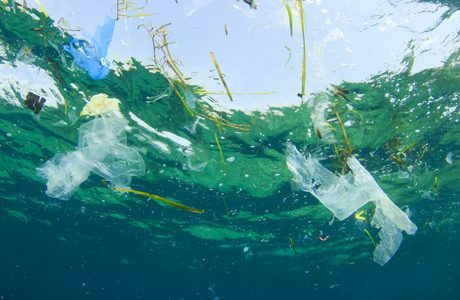
A first-of-its-kind analysis of the impact of 20 ocean trash items on seabirds, marine mammals and sea turtles was published on 12 January in the journal Marine Policy by the Ocean Conservancy and Commonwealth Scientific and Industrial Research Organization (CSIRO). Until now, the impact of marine debris items, such as plastic bags and fishing gear, to populations of these animals has been far less clear.
An analysis based on a survey of 274 experts representing 19 fields of study assigned scores for entanglement, ingestions and contamination on a shortlist of items culled from 30 years of data from Ocean Conservancy’s International Coastal Cleanup. The study found that a wide variety of items pose threats to marine wildlife through entanglement, ingestion, or contamination, suggesting that a comprehensive approach to preventing plastics from entering the ocean is vitally needed. Among the items, abandoned and lost fishing gear like nets, fishing line and buoys were found to pose the greatest overall threat to marine wildlife, primarily because of entanglement. Plastic bags emerged as the second most harmful item as they are often confused for food by marine mammals. Smaller items like balloons were also found to be harmful.
Springboard for action?
“We now have the best, most comprehensive assessment of trash and plastic waste on some of our most iconic marine wildlife,” said Nicholas Mallos, Director of the Trash Free Seas Program at Ocean Conservancy. “With this knowledge comes the responsibility to seek the most effective solutions to stem the tide of plastics into our ocean. These solutions must range from changing our own behaviour as consumers to local efforts like coastal cleanups and product-specific policy, to transformative ways to manage plastic waste at the global scale.”
Eight million metric tonnes of plastic leak into the world’s ocean every year and the amount continues to grow. Without concerted global action, there could be one ton of plastic for every 3 tons of fish by 2025, leading to significant environmental, economic and health issues. At least 80 percent of ocean plastic originates from land-based sources.
The study, “Using Expert Elicitation to Estimate the Impacts of Plastic Pollution on Marine Wildlife,” calls for a holistic, cross-sector approach to minimize the overall impact of plastic pollution on the ocean. Product-by-product approaches to reducing ocean plastic impacts alone will not suffice—a key finding from Ocean Conservancy’s Stemming the Tide report that outlines a solution set to reduce ocean plastic pollution by 45 percent by 2025.
Animal mortality confirmation
“Our study confirms what many scientists have suspected for some time — that there are likely to be substantial numbers of animals injured or killed by fishing line, plastic bags, balloons and other plastic consumer items every year,” said Chris Wilcox, senior researcher at CSIRO and lead author on the paper.
The study informs the work of the Trash Free Seas Alliance®, an effort by Ocean Conservancy to unite industry, science and conservation leaders who share a common goal for a healthy ocean free of trash.
“We have seen a striking number of marine mammals harmed by ocean plastic – from seal pups to sperm whales. While bag bans and beach cleanups are a positive step forward, larger scale solutions are needed for the ocean plastic problem, which is why we are a member of the Trash Free Seas Alliance,” said Jeff Boehm, Executive Director of The Marine Mammal Center.
“By working with industry, conservation groups, scientists and governments to reduce the amount of plastic going into the ocean, we can dramatically improve the lives of marine mammals and other wildlife.”







